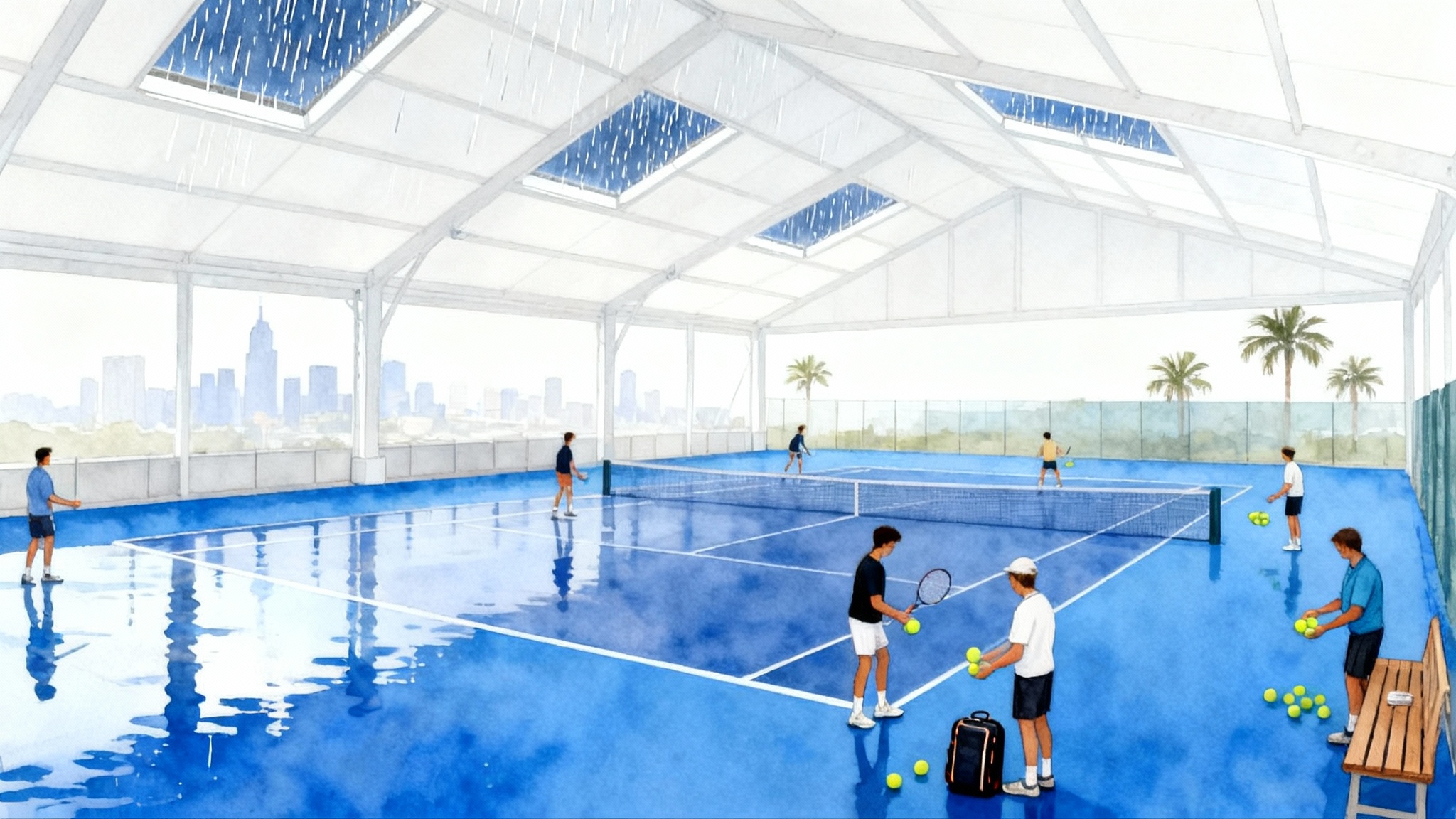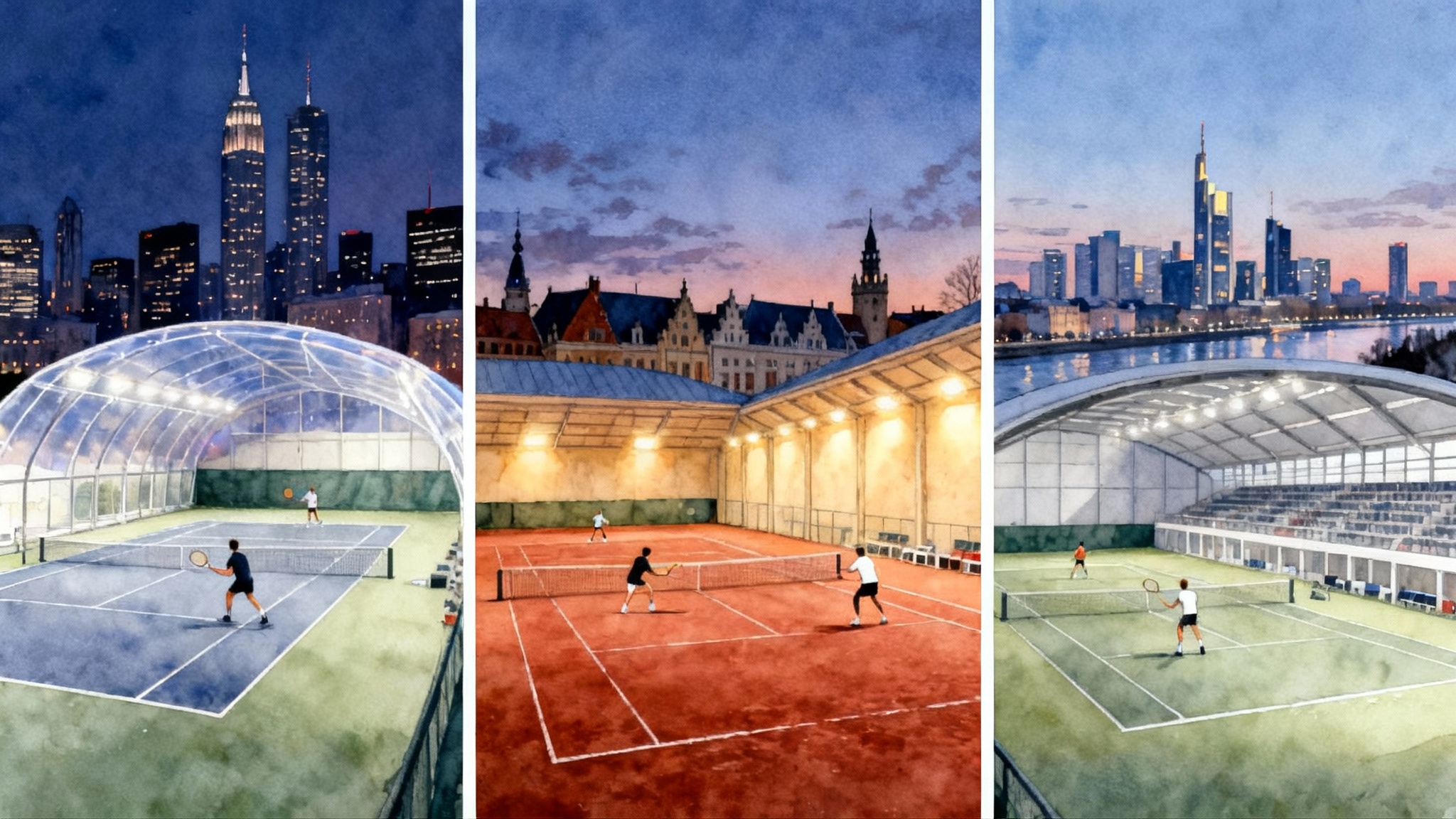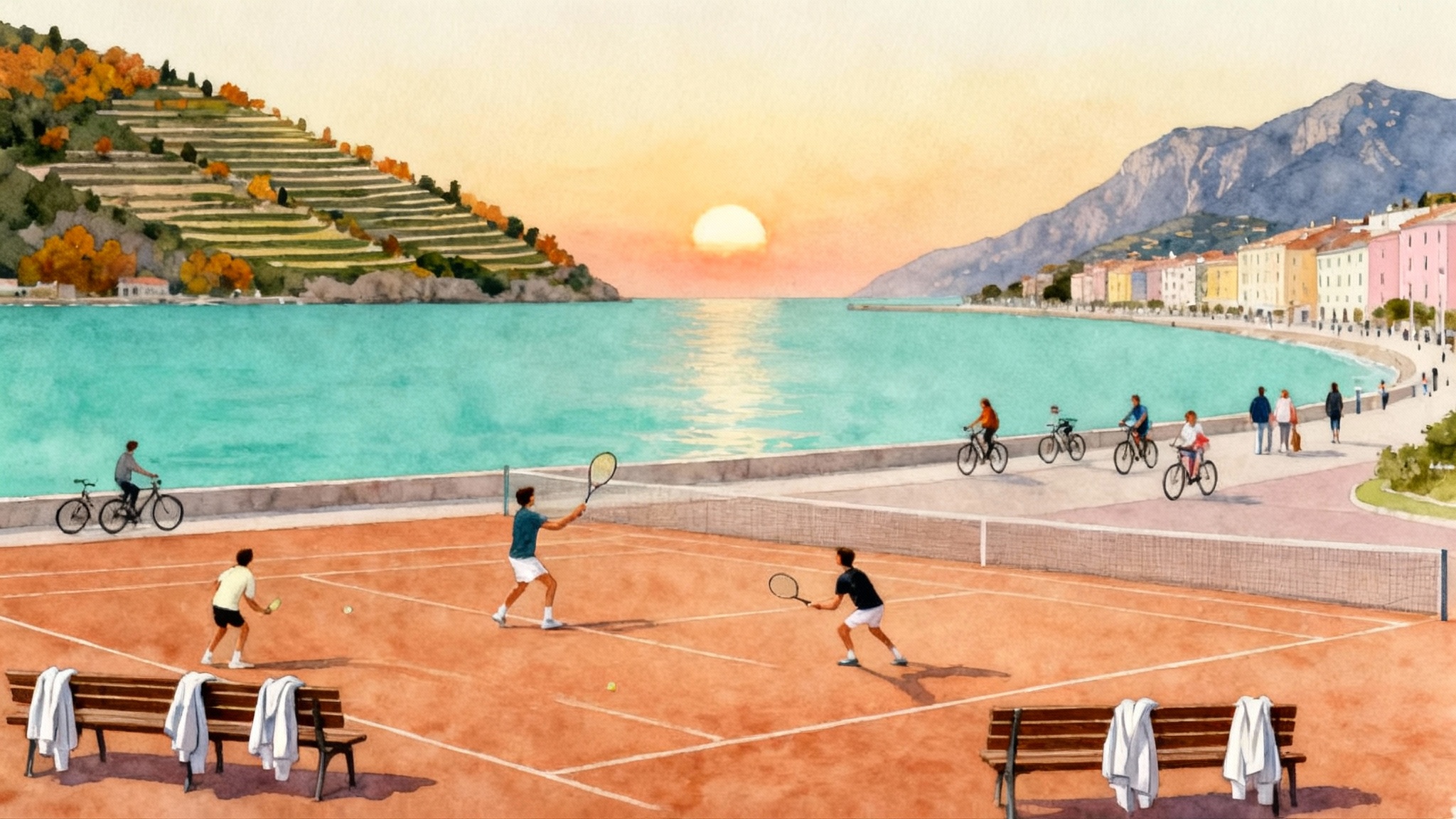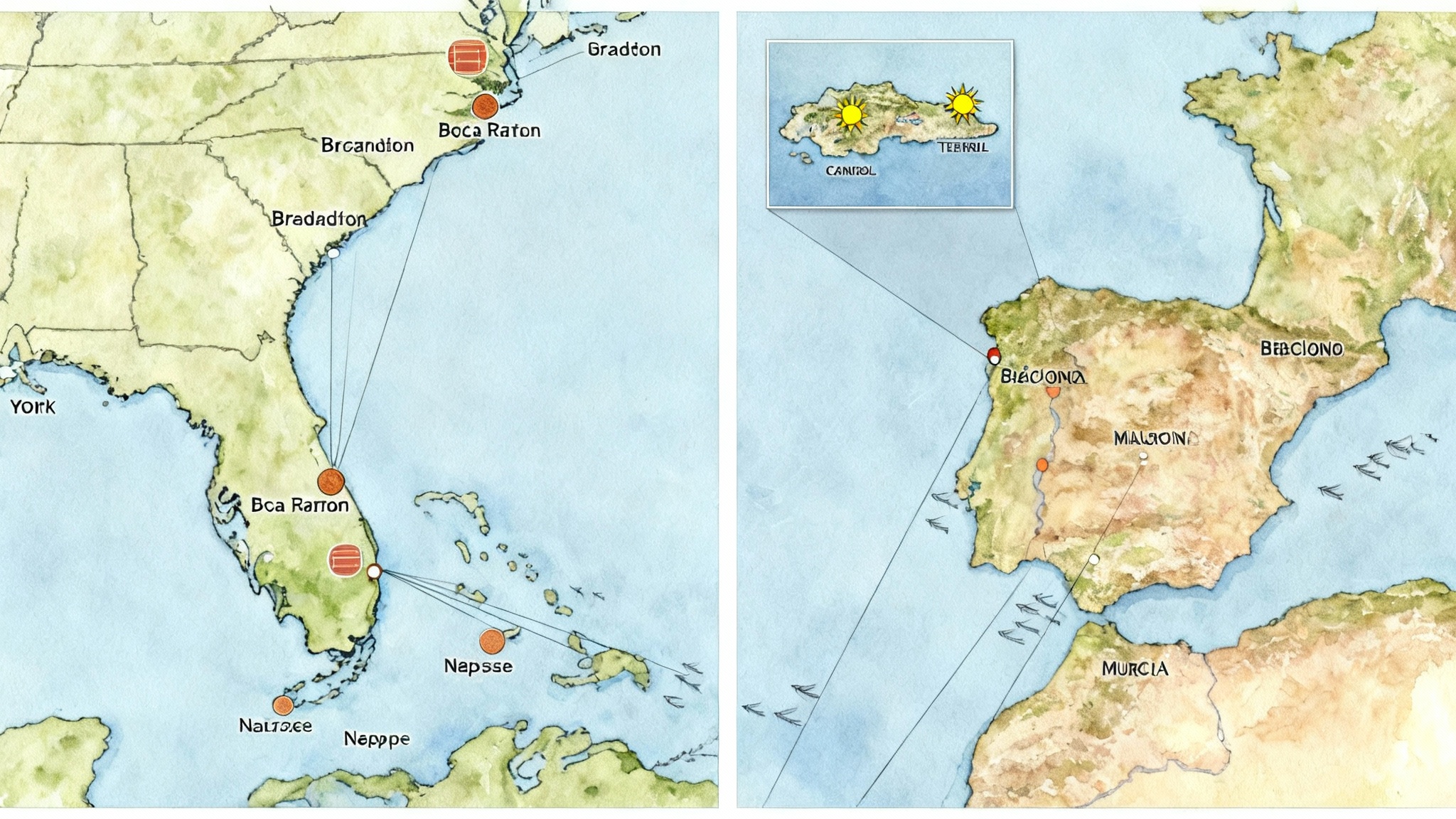Singapore Stopover Tennis: Weather-Proof Training with SITA
Turn your long-haul layover into real progress. Plan a 3–7 day training block in Singapore with SITA Tennis Academy, using covered courts for rain-safe sessions, humid-heat conditioning, fast transport, and family-friendly stays near venues.

Why Singapore is perfect for a stopover training block
If you want to land fitter at your next tournament or holiday, Singapore lets you train hard without weather excuses. The city’s tennis scene includes fully covered courts such as the seven indoor courts at Kallang Tennis Hub, which keep your hitting schedule intact even during tropical downpours or midday sun. You get reliable court time, not guesswork about clouds and radar apps. See the official overview of the venue’s indoor capacity and public bookings at the Kallang Tennis Hub page.
Humidity is not a bug, it is a performance feature. Practicing in Singapore’s warm, moist air increases sweat rate and teaches better hydration habits. Think of it like training with a slightly heavier backpack. When you shed it later, movement feels lighter. With the right pacing and hydration plan, even three days can jump-start your heat tolerance; a full week makes it stick.
Add in world-class airport logistics and you get minimal transition friction. Changi Airport is consistently fast for arrivals and bags, the metro connects you to the city, and car rides are short. That means you can land at breakfast and be on court by late morning, or play an evening match before a midnight connection.
If you are considering a regional alternative with similar weather-proof setups, our monsoon-proof tennis in Bangkok guide explains court options and seasonal tactics.
Who SITA is for, and how sessions run
SITA Tennis Academy serves traveling juniors, college players, touring pros between events, and ambitious adult competitors. The coaching team builds short, focused blocks that blend on-court drilling with situational point play and match preparation. The academy operates at central-city venues, including bases around St. Joseph’s Institution International and Dempsey Hill, which makes it easy to combine training with family time at nearby parks and cafes. Learn more on the SITA Tennis Academy profile. For current programs and locations, check the SITA Tennis Academy programs page.
What to expect in a stopover block:
- A short assessment hit on Day 1 to set priorities
- Two daily on-court sessions where appropriate: morning technical reps, late-day patterns and points
- Optional add-on UTR matchplay to create rating-eligible results
- A recovery plan baked into each day so you adapt rather than accumulate fatigue
How to plan 3, 5, and 7 day blocks
Below are sample structures. Times are guides; SITA will adjust to your flight arrivals and training goals.
3 day accelerator
Day 1: Arrive, assessment, and rhythm
- 09:00 Land at Changi, light breakfast and hydration
- 11:00 Check into hotel or drop bags with concierge
- 12:00 Court session 1: 75 minutes of ball-strike calibration, contact point, and serve rhythm
- 14:00 Recovery lunch, electrolytes, 20 minute nap
- 17:00 Court session 2: Patterns on serve plus one and first ball depth, 45 minutes of points to 11
- 19:00 Mobility, easy dinner, lights out by 22:00
Day 2: Speed of play and decision-making
- 07:30 Warm up run-walk and dynamic mobility
- 08:00 Court session: tempo ladder drills, return plus depth targets, 3 ball plus transition
- 10:00 Protein-forward breakfast
- 12:00 Video review of serves and first step, goal tweaks
- 16:30 Court session: situational games to 15, tiebreak rehearsals, pressure serves
- 19:00 Contrast shower or pool flush, stretch, early night
Day 3: Competitive stimulus
- 08:00 Light hit, serve buckets, returns
- 10:00 Optional UTR verified set or matchplay rehearsal with coaching feedback
- 13:00 Recovery meal, pack, airport transfer
Result: re-centered timing, two clear technical cues, and a fresh match feeling without heavy fatigue.
5 day builder
Day 1 mirrors the accelerator start. Then add:
Day 2: Ball tolerance and grip on contact
- Morning: cross-court forehand lanes and backhand lanes with live depth gates
- Evening: defensive neutralize to offense drill, two-on-one for court coverage
Day 3: Serve and return bias
- Morning: 60 minute serve mechanics block with second serve targets, return contact against different speeds
- Evening: set play, analytics on first serve percentages and return depth
Day 4: UTR matchplay and emotional control
- Morning: light priming hit
- Midday: UTR verified match or two fast sets with a local peer matched to your level
- Evening: recovery, journaling of between-point routines
Day 5: Synthesis
- Morning: pattern consolidation, finishing balls, transition volleys
- Afternoon: taper and travel prep
7 day progression
Days 1 to 4 follow the 5 day builder. Then add:
Day 5: Movement economy
- Morning: split-step timing, first-step acceleration, and stop-start control using lines and cones
- Evening: serve plus third ball, transition closes, net coverage
Day 6: Competition day
- Morning: light primers
- Afternoon: two short format UTR matches or one full match depending on load
Day 7: Sharpen and ship
- Morning: constrained games to your biggest play patterns, short targets
- Midday: mobility circuit, hydration planning for your next destination
Add-on UTR matchplay, explained
Universal Tennis Rating matchplay lets you turn training into measurable results. For a stopover block, SITA arranges one or two verified matches with local players at your level. This can be done on weekdays or weekends, subject to court availability.
How it works in practice:
- You confirm intent at booking so opponents can be queued early
- The academy aligns formats to your load: one set to eight for a light day, or best of three short sets for a heavy stimulus
- A coach captures basic stats and key moments so the match drives the next practice
- If you are using UTR for college or seeding, plan at least one 24 hour gap between heavy training and your match window so the rating reflects your real level
Recovery that fits the climate
Singapore’s heat and humidity make smart recovery non-negotiable. Build these into your days:
- Hydration plan: aim for clear, frequent urine by midday, and use electrolytes, not just water, after long hits
- Pool flush: 10 to 15 minutes of easy laps or walking in water at your hotel pool
- Contrast showers: three rounds of warm and cool to reset your legs
- Compression or massage: book sports massage if you have a five or seven day block
- Sleep timing: keep the same lights-out window each night to manage jet lag
Food strategy:
- After morning practice, choose protein plus carbohydrates: rice bowls, grilled fish, vegetables
- Before evening hits, take a small carbohydrate snack 60 minutes prior
- If you sweat heavily, add salty foods at dinner to replenish sodium
Where to stay, by budget and family needs
These picks balance transport, family amenities, and access to training venues. Prices shift with dates; use them as positioning, not fixed quotes.
Budget and great value
- City-fringe hotels near the metro: properties around Lavender, Kallang, and Bugis place you within a short ride of indoor courts and central venues
- Capsules or compact rooms near Changi: ideal for ultra short stay athletes who want a shower, a nap, and a single focused session
- Family-savvy value near Katong or Joo Chiat: access to beach paths for warm-ups and plenty of simple dining
Midscale comfort
- Marina Bay or City Hall area: straightforward metro links to Kallang and quick rides to Dempsey, with large pools for recovery
- Orchard fringe: easy reach of Dempsey Hill and Botanic Gardens for light jogs and mobility
Premium and resort-style
- Airport-connected hotels at Changi: a true time saver for late arrivals and early departures with direct terminal access and quiet rooms
- Five-star city properties near Orchard and the river: bigger gyms, reliable room service, and connecting rooms for families
- Serviced apartments near Beach Road or River Valley: kitchens for athletes who prefer control over meals and sleep routines
Family-friendly filters to use when you book:
- Pool depth and opening hours for kids
- Rooms with blackout curtains, quiet floors, and cribs on request
- Walking distance to playgrounds or parks for active rest
Getting around without friction
- The metro network is clean, air conditioned, and reliable; tap your credit card at the gate instead of buying tickets
- Rideshare is quick for early morning and late-night session times; plan a five minute buffer for pickups
- Pack two racquets and backup strings so you do not need emergency restringing at inopportune hours
- Keep a small towel and spare shirts in a zip bag; humidity means you will sweat through gear faster than at home
A practical daily schedule template
Below is a template you can repeat across three to seven days. Adjust volume to your level and upcoming competition.
- 06:45 Wake, 500 milliliters water with electrolytes, short mobility
- 07:15 Light breakfast: oats with fruit or egg on toast
- 08:00 Warm-up jog and dynamic stretching
- 08:20 Court session 1: technique and ball tolerance, 80 to 90 minutes
- 10:00 Cooldown and pool flush
- 11:00 Video and notes, snack
- 12:30 Lunch and a 20 minute nap
- 15:30 Activation band routine, footwork ladders
- 16:00 Court session 2: patterns and points, 70 minutes
- 17:30 Serve buckets or return reps, 20 minutes
- 18:00 Contrast shower, stretch
- 19:30 Dinner with extra salt if needed
- 21:30 Lights out
Covered courts and weather-proof options
Priority one is protected court time. In addition to the indoor bank at Kallang, Singapore has other sheltered facilities that can be booked or used via programs. SITA coordinates venue selection based on your schedule, rain forecast, and proximity to lodging so you spend time swinging, not commuting.
What that looks like on a rainy afternoon: your session goes ahead under a roof, serves are audible in the quiet, bounces are consistent, and no one is wiping puddles between points. On blazing days, the roof and ventilation keep the surface playable and energy controlled.
Pairing Singapore with Bali, Phuket, or Australia
The goal is continuity. Use the stopover as the start of a two to three week arc so your body keeps the adaptation.
Singapore to Bali
- Flight time is about three hours
- Plan one light hit at your Bali base the day you arrive
- Keep humidity adaptation by practicing early mornings or late afternoons, and keep electrolytes in your bottle
Singapore to Phuket
- Flight time is about two hours
- If you arrive in the afternoon, use a 45 minute mobility plus serve session instead of a full hit
- Build two on-court days, then a lighter day with beach run intervals to maintain engine without pounding your joints
- For reliable covered courts once you land, consider SiamSportsPro Tennis Academy Phuket.
Singapore to Australia
- East coast flights range from about seven to eight hours
- Schedule a day minus one taper in Singapore to reduce residual fatigue
- On arrival, do a 30 minute easy hit and a long walk, then return to full training the next morning
Continuity checklist for onward travel:
- Keep your two or three daily cues front and center: for example, higher contact on the forehand, or wider base on returns
- Carry a small recovery kit: massage ball, hip band, salt tabs, and a soft bottle for airport hydration
- Protect sleep on the longer sector to Australia with an eye mask and set mealtimes to the destination clock as soon as you board
Budgeting and booking tips
- Covered public courts are typically priced above outdoor courts due to demand and infrastructure, yet still affordable compared to private clubs; check current rates when you book
- Reserve peak-hour indoor slots several days ahead, especially Friday evenings and weekends
- If you want UTR matchplay, tell SITA at the time of inquiry so opponents can be confirmed; last-minute requests are sometimes possible but less predictable
- For families, two connecting rooms can be better value than one suite, and give early sleepers the darkness they need while an adult preps gear for morning
Packing list for humid-heat performance
- Two pairs of shoes so one can dry fully while you use the other
- A hat with dark underside and plenty of sweatbands
- Overgrips to swap mid-session
- Light-colored shirts and shorts to reflect heat
- A compact electrolyte supply to cover every session
- A waterproof pouch for your phone or passport during rainy arrivals
How to choose your block length
Three days if you need rhythm and routine fast. Five days if you want one verified match and a measurable improvement in ball tolerance and decision-making. Seven days if you want a full cycle of learning, testing, and refinement with two competitive days and a clear plan for your onward trip.
Booking SITA and wrapping it together
Booking is straightforward. Share your flight numbers, training goals, whether you want UTR matchplay, and any constraints such as family nap times or schoolwork hours. SITA replies with a draft schedule, court options, and a recovery plan. Sessions run on covered courts when needed so rain or shine, you hit your reps. This is the rare stopover where you land sharper than you left.
To make the most of it, decide your two focus areas now. It could be return depth and first step, or second serve shape and transition volleys. Build your three to seven days around those, trust the process, and carry the cues to Bali, Phuket, or Australia. Your layover just became a lever.


